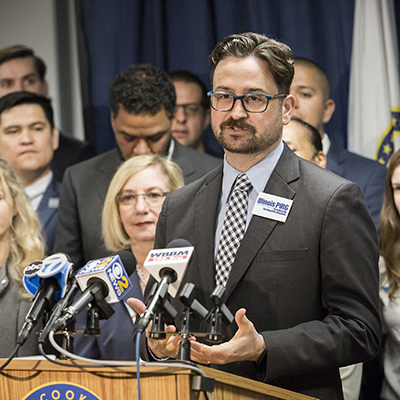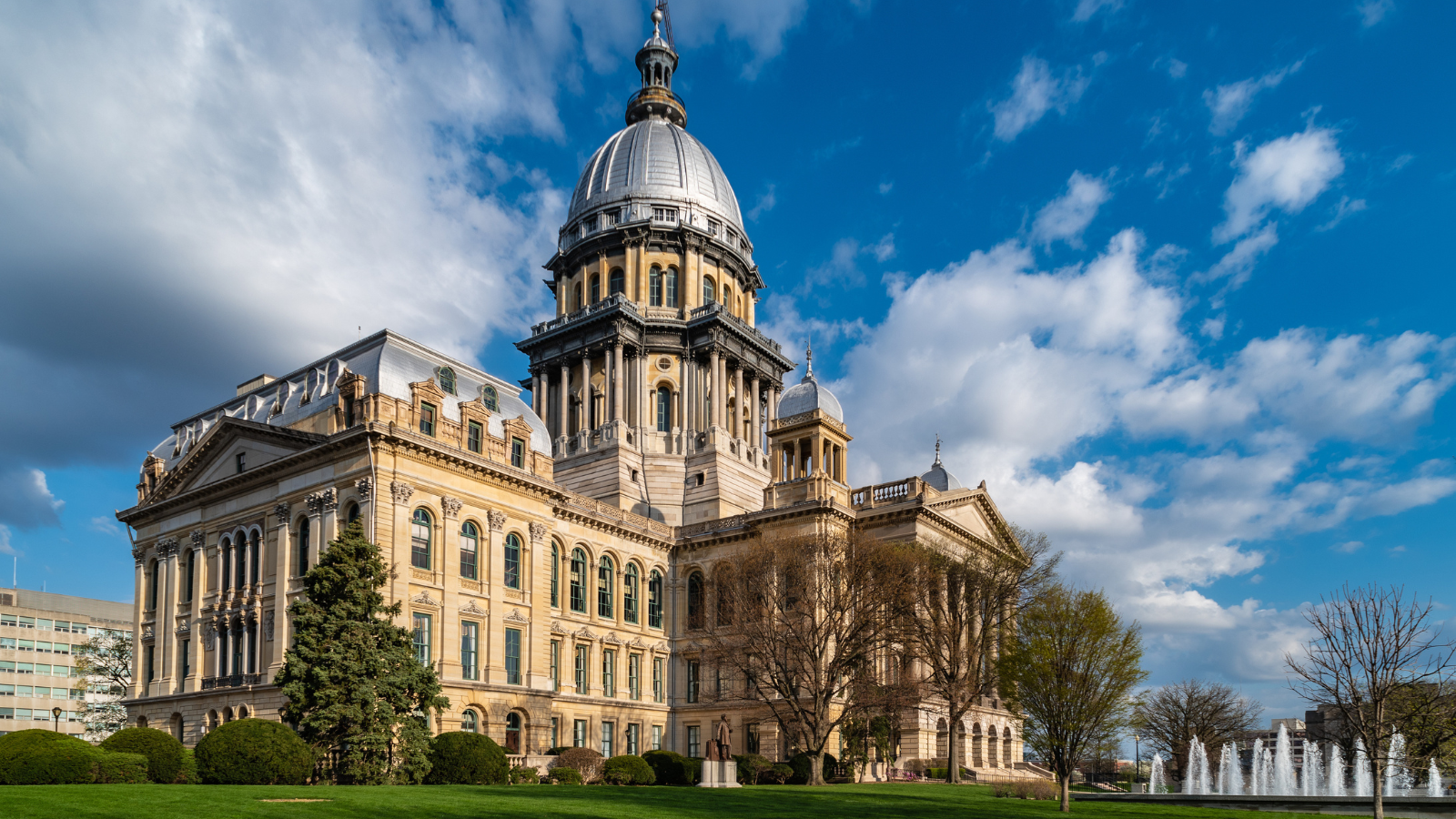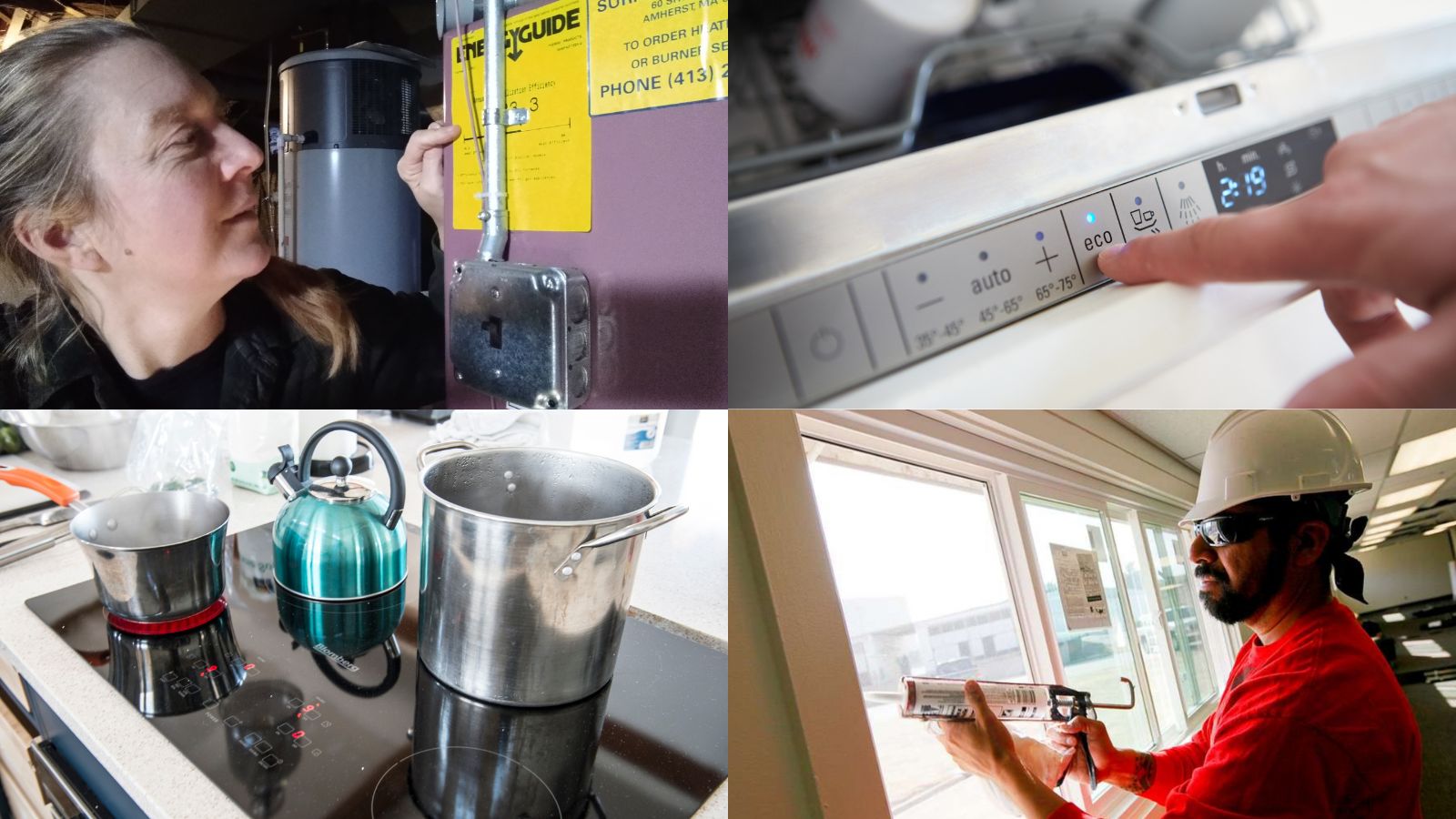
Testimony before the House Executive Committee in Opposition to SB2408
It is critical that Illinois take action to build our 100% renewable energy future. Because this action is so important, and because the omnibus legislation contains many critical policies we support, I am disappointed to write in opposition to SB2408, which fails to end key formula rates harms by continuing to guarantee utility profits through a policy known as an annual reconciliation.
Chairperson Rita, Vice Chairperson Davis, Spokesperson Wheeler, honorable members of the committee: thank you for the opportunity to testify today. My name is Abraham Scarr and I am the Director of Illinois PIRG.
Illinois PIRG is a statewide, citizen funded, non-partisan public interest advocacy organization that speaks out for a healthier, safer world in which we’re freer to pursue our own individual well-being and the common good.
I wish to begin by thanking the many House leaders who have worked tirelessly to achieve omnibus energy legislation, including Vice Chairperson Davis, Representatives Williams, Buckner, and Evans, among many more. It is critical that Illinois take action to build our 100% renewable energy future.
Because this action is so important, and because the omnibus legislation contains many critical policies we support, I am disappointed to write in opposition to SB2408 HFA2, which fails to end key formula rates harms by continuing to guarantee utility profits through a policy known as an annual reconciliation. This policy, which supercharges the traditional utility incentive to spend money to make money, dwarfs other “performance” incentives in the ratemaking section and weakens the impact of positive ratemaking policies in the bill, including a grid audit and integrated grid planning.
The bill presents ComEd and Ameren with a new formula ratemaking scheme that is likely more profitable to them – and costly to consumers – than current formula rates. ComEd’s authorized annual profit was $456 million in 2014 and will be over $800 million next year. Rather than addressing these formula rate gains, this bill adds to them. ComEd’s guaranteed profits will grow to over $1 billion annually when new rates go into effect 2024.
According to reasonable and conservative cost projections, the single biggest cost driver of this legislation is not the subsidies to keep Exelon plants open, nor renewable energy funding, nor funding various equity programs. Rather, the single biggest cost is increases in ComEd profits, thanks to a combination of maintaining formula rate profit guarantees and an effective increase in utility profit rates.
You can think of this legislation as crafting a budget for allocating ratepayer money. In this budget, over the next decade, the General Assembly is choosing to make its largest investment in profits for ComEd and its 99.985 percent shareholder, Exelon.
Historically, utility policy has aimed to create the opportunity for private utility profits as an incentive to deliver a public good, affordable, reliable power. Formula rates, as they exist now and will exist under this legislation, corrupt utility regulation by guaranteeing profits unnecessary to achieve the long-term public good, but demanded by Exelon to meet short-term profit desires.
The ratemaking policies included in this legislation will profoundly shape utility incentives and regulation, and the General Assembly cannot ignore the most likely outcomes of its policy decisions by pretending it is simply handing ratemaking decisions over to the Illinois Commerce Commission. The committee should consider the 2013 “QIP” surcharge policy passed for gas utilities when they asked for the same formula rate treatment granted to electric utilities. House members were told the average Peoples Gas customer would pay $1.14 a month for the surcharge. The average Peoples Gas customer paid a $13.14 monthly surcharge for the program over the second quarter this year. The ICC has the same obligation to review each one of those investments; it has failed to keep costs under control. Even with low gas prices, the surcharge is driving a home heating affordability crisis in Chicago and rate hikes for Ameren and Nicor. These outcomes are a direct result of the policy passed by the General Assembly.
With formula rates and the QIP surcharge, the General Assembly has repeatedly passed policies over the past decade that have resulted in massive increases in gas and electric delivery profits, and customer rates. That overall bills have remained relatively flat is a function of declines in power prices driven by historically low gas prices. These low power prices will not continue indefinitely. With coming increases on both the delivery and generation sides of bills, customer bills will rise. Your constituents will rightly ask why. Under this bill, the primary answer, unfortunately, is that the General Assembly is choosing to continue rewarding scandal-plagued ComEd with even larger guaranteed profits.
This outcome is completely unnecessary as a matter of policy. We do not need to guarantee utility profits to eliminate carbon emissions from the power sector. We do not need to guartunee utility profits to invest in renewable energy. We do not need to guarantee utility profits to achieve the many just transition, workforce development and other equity goals contained in the legislation.
This outcome is also completely unnecessary as a matter of politics. I am not naive. I understand compromise is necessary in politics, and no policy initiative of this size, scope, and complexity will make every stakeholder happy, or can pass without consideration of the preferences of powerful incumbent interests as the utilities obviously are. But this year of all years, with ComEd’s deferred prosecution agreement, its political fallout, and the ongoing federal investigation, presented the General Assembly the opportunity to make a clean break from the tainted energy policies of the past. The General Assembly is failing to take that opportunity. Not only does the legislation extend key formula rate policies, but it fails to include other key utility reform policies championed by consumer advocates, many which were included in Governor Prtizker’s original proposed legislation, including addressing the QIP surcharge, ending the practice of utilities using customer money to make charitable contributions, and prescribing a mechanism to reduce the already inflated and unnecessary profits created by formula rates.
The political upside of fully ending formula rates is obvious, which is why proponents of every proposed energy bill before the General Assembly this year have claimed to be doing so, even though most proposals, including the one before this committee today, do not in fact completely end formula rates, but transition from one type of formula rate to another.
While we would recommend further changes to the legislation, the General Assembly could fully end formula rates and greatly strengthen the impact of the integrated grid planning process and multi-year rate plans simply by removing the annual cost reconciliation, found in Section 16-108.18(f)(6).
More detail on formula rates and annual cost reconciliations
In June, we published a short report analyzing the formula rate policies included in legislative drafts circulated at the time, policies that are included in both bills before this committee.
To summarize, both bills:
- extend a portion of the current formula rate, annual actual cost reconciliations, two years past its current sunset;
- incorporate key formula rate policies, including annual actual cost reconciliations, into a new ratemaking structure, extending utilities’ guaranteed profits; and
- significantly increase the amount of those profits, by effectively raising their profit margin, known as the Return on Equity, or ROE.
The combination of extending formula rate profit guarantees with higher profit margins represents a windfall for ComEd and Ameren.
Annual actual costs reconciliations are what guarantee utility profits and are the key policy that defines a formula rate.
As described in our December 2020 report, Guaranteed Profits, Broken Promises, under traditional utility regulation, when setting a utility’s rates, the Commission seeks to set a level of annual revenue that allows for the opportunity, but not the guarantee, to recover the utilities investment and expense costs, as well as a profit for shareholders, through the rates customers pay.
That revenues and profits are not guaranteed under traditional regulation is intentional and important. It encourages efficient spending and management; it means shareholders bear some of the operational risks inherent to the utility enterprise.
As ComEd repeatedly made clear when advocating for formula rates, turning this opportunity into a guarantee, creating “certainty,” was the primary goal of formula rates. The company said it could not make grid modernization and reliability investments “without the stability and predictability embodied in the regulatory reform section of the bill.”
This certainty, and the annual profit increases that the higher spending represents, more than the actual formula equation, which is a 30-page document used to determine year-to-year rates, is the key policy within formula rates. This certainty guarantees utility revenue and profit; the companies know that every dollar of capital investment will be recovered with profit and all operating expenses will be recovered in full.
To simplify, the two words that provide this certainty are not “formula rate,” but “actual costs.” Actual costs are the subject of an annual formula “true-up” or “reconciliation” to compare the projected costs for the year, off of which rates were based, with what the utility actually spent, its actual costs for that year. If costs were higher or lower than projected, the difference, along with interest, will be charged or credited to customers in future rates.
This is not our judgment alone. In a June 2021 presentation before the National Association of Consumer Advocates, Mark Lowry of the Pacific Economics Group, an expert on Performance Based Regulation and other alternatives to traditional cost of service utility regulation, highlighted annual cost reconciliations as the defining characteristic of formula rates, writing in a slide about multi-year rate plans:
“Misconceptions that result can lead to surprising outcomes
-
MD and DC have recently approved “multiyear rate plans” that are really formula rates due to “reconciliation mechanisms”
-
IL is on the verge of doing the same thing”
To demonstrate the potential value of this windfall to ComEd, we calculated ComEd’s profits over the next four years as if the company had the higher ROE from the bill over that time. To be clear, this is not a prediction, as new rates from the new ratemaking scheme will not kick in until 2024. Rather, our calculations provide an indication of the significant windfall this legislation provides ComEd at ratepayer expense.
We found:
- Compared to two baselines, ComEd would make an additional $664 – $893 million in profits over four years. This means that were ComEd to enjoy a higher ROE over the next four years, it would earn somewhere between $166 million to $223 million in additional profits per year. Exelon’s subsidy from the legislation, reported to be $694 million over five years, amounts to “only” $139 million per year.
- Over four years, 2021 through 2024, ComEd would be authorized to earn $3.9 billion in profit, not accounting for additional profits from regulatory assets. For reference, in the 12 years ComEd existed as an Exelon subsidiary before formula rates began, it reported $3.9 billion in profit to the Securities and Exchange Commission.
- ComEd would begin collecting over $1 billion in authorized profit from customers in 2023.
Again, a more in depth discussion of these policies and explanation of our calculations is included in our report
While we would recommend further changes to the ratemaking policies within the legislation, if the Illinois General Assembly wishes to completely end formula rates, it must amend the legislation to:
-
Delete Section 16-108.25 “Tariff regarding transition in rates” and any references to it;
-
Delete subsection 16-105.18(f)(6), “Annual Adjustment” and any references to it;
-
Adopt provisions from the Consumers and Climate First Act, HB4074 (Buckner) and SB2896 (Villanueva) amending 16-108.5:
-
Deleting the vague language allowing for some form of an actual cost reconciliation after formula rates otherwise sunset;
-
Moving the sunset date for formula rates to December 31, 2021. Another option would be to suspend current formula rate update dockets and maintain current rates until the new ratemaking structure begins.
Thank you for the opportunity to submit written testimony. I will be happy to answer questions from committee members.
Topics
Authors
Abe Scarr
State Director, Illinois PIRG; Energy and Utilities Program Director, PIRG
Abe Scarr is the director of Illinois PIRG and is the PIRG Energy and Utilities Program Director. He is a lead advocate in the Illinois Capitol and in the media for stronger consumer protections, utility accountability, and good government. In 2017, Abe led a coalition to pass legislation to implement automatic voter registration in Illinois, winning unanimous support in the Illinois General Assembly for the bill. He has co-authored multiple in-depth reports on Illinois utility policy and leads coalition campaigns to reform the Peoples Gas pipe replacement program. As PIRG's Energy and Utilities Program Director, Abe supports PIRG energy and utility campaigns across the country and leads the national Gas Stoves coalition. He also serves as a board member for the Consumer Federation of America. Abe lives in Chicago, where he enjoys biking, cooking and tending his garden.
Find Out More

Illinois PIRG 2024 Legislative Agenda

Dry cleaner with an electric clothes dryer

Need to replace your water heater? Consider electric

